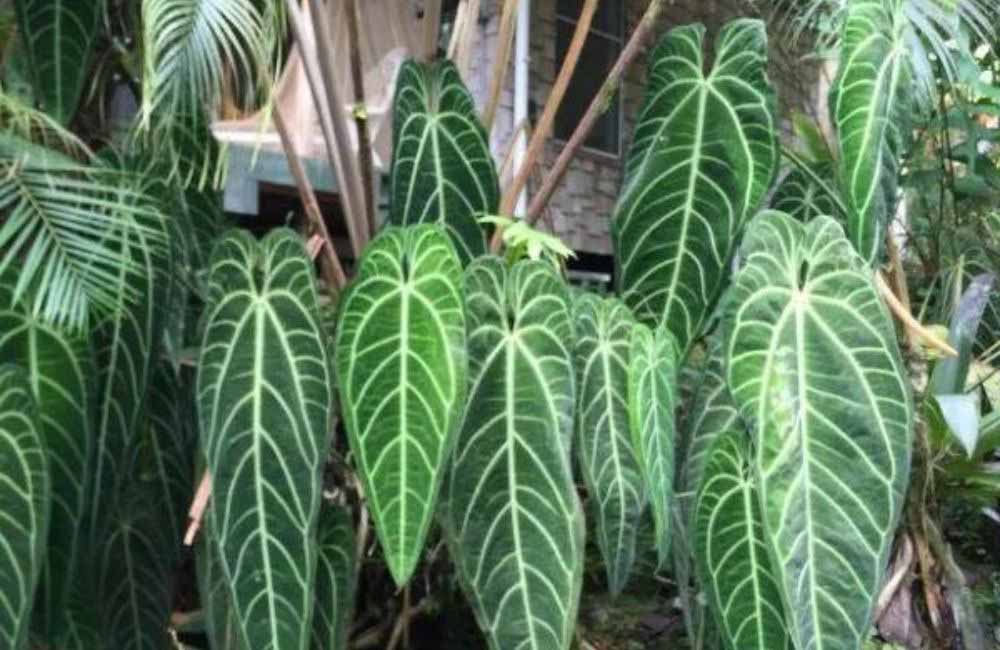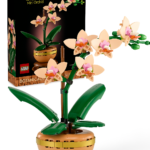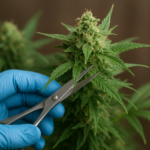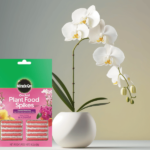Anthurium Warocqueanum is a popular tropical plant with large, dark green leaves and distinctive white veins. Queen anthurium is a sought-after tropical plant characterized by its striking large dark green leaves adorned with white veins.
With its unique and bold appearance, this plant has gained popularity among plant enthusiasts and collectors. The Anthurium Warocqueanum is native to Colombia and Ecuador and thrives in warm and humid conditions, making it an excellent choice for indoor cultivation.
Its eye-catching leaves, often resembling the texture of reptile skin, make it a stunning centerpiece in any home or office. Whether you are a seasoned plant lover or a beginner, the Anthurium Warocqueanum is sure to add a touch of elegance and drama to your indoor garden.
What Is Anthurium Warocqueanum?

Anthurium warocqueanum, known as the Queen Anthurium, is a species of plant in the genus Anthurium that is native to Colombia. It is grown in more temperate climates as a greenhouse specimen or houseplant for its ornamental foliage. The plant is known for its stunning, elongated, dark green leaves with prominent silver veins.
The leaves can grow up to 2 meters in length and 8-25 cm wide. Queen Anthurium is an epiphytic plant, meaning it grows on the surfaces of other plants and trees instead of in the soil. It requires high humidity, indirect light, and well-draining soil. The plant is considered difficult to care for and is sought after for its beautiful foliage.
Anthurium Warocqueanum Types

There are a few different types of Anthurium warocqueanum that you may come across. Each type possesses its distinct characteristics and allure, making them a remarkable addition to any plant collection. Let’s take a closer look at the various types:
Anthurium Warocqueanum ‘vittarifolium’
The ‘Vittarifolium’ variety of Anthurium warocqueanum is known for its large, elongated leaves that feature prominent veins and a velvety texture. This type of Anthurium is valued for its striking silver-green foliage, creating a captivating visual effect that demands attention.
Its leaves can grow up to 3 feet in length, adding an impressive presence to any indoor jungle. The ‘Vittarifolium’ variety thrives in bright indirect light and enjoys a high level of humidity, making it a perfect choice for those looking to create a tropical oasis indoors.
Anthurium Warocqueanum ‘magnificum’
The ‘Magnificum’ variety of Anthurium warocqueanum is the most popular among plant enthusiasts due to its massive leaves and intense dark green color. Its leaves have a heart-shaped appearance, featuring a velvety texture and prominent venation.
This variety requires similar conditions to the ‘Vittarifolium’ type, thriving in bright indirect sunlight and high humidity. The ‘Magnificum’ variety adds an enchanting and dramatic touch to any space, elevating the aesthetics of any interior.
Anthurium Warocqueanum ‘normal’
The ‘Normal’ variety of anthurium warocqueanum queen, also known as the species type, showcases the classic attributes of this magnificent plant. It features elongated heart-shaped leaves with a velvety texture and a deep green color.
This variety is smaller compared to the other types but still offers a striking and irresistible presence. With proper care, the ‘Normal’ variety can flourish, becoming the centerpiece of any plant collection.
In summary, Anthurium warocqueanum encompasses several delightful types, each possessing its unique charm. With its stunning silver-green foliage, massive leaves, or classic allure, Anthurium warocqueanum will captivate you with its stunning beauty.
How To Care For Anthurium Warocqueanum?

Anthuruim Warocqueanum, also known as the Queen Anthurium, is a stunning tropical plant known for its large, heart-shaped leaves and velvety, deep-green foliage with prominent white veins. Proper care is essential to keep this beauty thriving in your indoor garden. In this section, we will explore everything you need to know about caring for Anthurium Warocqueanum.
Ideal Light For The Anthurium Warocqueanum
Providing the right amount of light is crucial for the healthy growth of Anthurium Warocqueanum. It thrives in bright, indirect light. Placing your Queen Anthurium near a north or east-facing window is ideal, as it will receive ample bright light without direct sunlight that can cause leaf burn.
How To Water The Queen Anthurium Warocqueanum?
Watering the Queen Anthurium is all about finding the right balance. The soil should be kept moist but not soggy. Check the top inch of the soil before watering. If it feels dry, water your plant, allowing the excess water to drain. Avoid overwatering since it can cause root rot, but do not let the soil dry out completely since it can stress the plant.
Soil Requirement
Using a well-draining soil mix is vital for Anthurium Warocqueanum’s health. A recommended soil mixture is a blend of peat moss, perlite, and orchid bark. This mixture allows for good water retention while preventing waterlogged roots.
What Fertilizer For Anthurium Warocqueanum?
Feeding your Queen Anthurium with the right fertilizer is necessary to enhance its growth and foliage color. Use a balanced, organic fertilizer with a ratio of 10-10-10 or a similar NPK (nitrogen, phosphorus, and potassium) composition. Apply the fertilizer every month during the growing season and reduce frequency during winter.
Temperature Requirement
The Queen Anthurium thrives in warm temperatures ranging between 65°F and 80°F (18°C to 27°C). Avoid placing your plant in drafty areas or near air-conditioning vents, as it prefers a consistent temperature. Protect it from extreme temperature fluctuations, as both cold and hot drafts can harm the delicate leaves.
What’s The Perfect Humidity For A Queen Anthurium?
As a tropical plant, Anthurium Warocqueanum loves high humidity levels. Aim for humidity levels between 60% and 80% to keep your Queen Anthurium happy. You can increase humidity by placing a humidifier near the plant or by grouping it with other indoor plants to create a microclimate.
How To Repot Anthurium Warocqueanum?
To repot an anthurium queen, follow these steps:
- Choose a new container that is 2 to 3 inches larger in size than the current pot.
- Make a well-draining and well-aerated potting mix, such as a mix of anthurium and orchid soil.
- Carefully remove the plant from its current pot.
- Shake off any excess soil from the roots.
- Place the plant in the new container and fill it with the prepared potting mix.
- Water the plant to help the roots settle in the new soil.
- Provide the plant with medium indirect light and maintain a consistent watering schedule.
Pruning
Regular pruning helps queen warocqueanum maintain its shape and encourages new growth. Any yellowed or damaged leaves should be removed with clean, sharp pruning shears. To promote bushier growth, you can also trim back leggy stems. Remember to sterilize your pruning tools with rubbing alcohol before and after use to prevent the spread of any potential diseases.
Toxicity Of Anthurium Warocqueanum

Anthurium warocqueanum, also known as the Queen Anthurium, is a striking tropical plant that boasts large, dark green leaves adorned with white veins. While this plant can add a touch of sophistication to any indoor space, it’s important to be aware of its potential toxicity.
For Humans
Although Anthurium warocqueanum is a stunning plant, it’s important to exercise caution when handling it. It contains oxalates, which are capable of causing mild to severe irritation and discomfort if ingested.
The affected area should be washed immediately with soap and water if irritation persists or worsens if you come into contact with sap. It’s also recommended to wear gloves when handling queen anthurium warocqueanum to prevent any potential skin contact.
For Pets
If you are a pet owner, it’s crucial to consider the potential risks warocqueanum queen poses to your furry friends. Both cats and dogs are toxic if they consume this plant. The oxalates present in the sap can cause oral irritation, drooling, difficulty swallowing, vomiting, and, in some cases, more severe symptoms such as difficulty breathing.
If you suspect that your pet has ingested any part of the Anthurium warocqueanum plant, it’s important to contact your veterinarian immediately. They will be able to assess the situation and tell you the best course of action to ensure your pet’s safety and well-being.
Growing Problems
While the toxicity of the queen anthurium is a significant concern, there are also a few growing problems that plant enthusiasts should be aware of. This species can be more challenging to cultivate compared to other Anthurium varieties due to its specific humidity and temperature requirements.
Here are a few common challenges that may arise when growing Anthurium warocqueanum:
- Inadequate humidity levels can lead to stunted growth and the development of brown leaf edges.
- Low light conditions can cause the leaves to lose their vibrant coloration and become pale.
- Overwatering can cause root rot, resulting in wilting leaves and a decline in plant health.
- Pest infestations, such as mealybugs or spider mites, can damage the foliage and hinder growth.
Common Problems Of Anthurium Warocqueanum
As a plant lover, you may find yourself captivated by the striking beauty of the Anthurium warocqueanum. With its large, velvety leaves and unique heart-shaped blooms, this tropical houseplant is a true showstopper. The plant can also encounter its fair share of problems, like every other plant.
Pests
Anthurium warocqueanum, like many other houseplants, can fall victim to various pests. These tiny intruders can wreak havoc on your plant’s health. Here are some common pests that you may encounter:
- Spider Mites: These microscopic arachnids can infest your Anthurium warocqueanum, causing webbing between leaves and yellowing of foliage. Inspect the undersides of leaves for their presence. Treat infestation early by wiping the leaves with a cloth soaked in a mild soap solution or opting for organic insecticidal soap.
- Mealybugs: These white, cottony insects feed on the sap of your plant, leading to yellowing leaves and stunted growth. To cut them, use a cotton swab dipped in rubbing alcohol to dab and remove them from your plant. Follow up with a thorough rinse to ensure their complete eradication.
- Scale Insects: These creatures attach themselves to the stems and leaves of your Anthurium warocqueanum, sucking sap from the plant and causing yellow spots. Use an insecticidal soap or horticultural oil to manage scale infestations. Be sure to cover all areas affected by these pests.
Diseases
While Anthurium warocqueanum is generally a robust and resilient plant, it can still be susceptible to certain diseases. Here are a few common diseases you may encounter with this plant:
- Root Rot: Overwatering and draining soil can lead to root rot in your Anthurium warocqueanum. To prevent this, ensure that the plant is potted in well-draining soil and water it only when the top inch of soil feels dry. If root rot occurs, remove affected roots, repot in fresh soil, and adjust your watering practices.
- Leaf Spot: This fungal disease appears as brown or black spots on the leaves, often surrounded by yellow halos. To control leaf spots, remove and destroy affected foliage, improve air circulation around the plant, and avoid overhead watering. Applying a fungicide may also help eradicate the disease.
- Bacterial Blight: Characterized by slimy, water-soaked spots on the leaves, bacterial blight can impact your Anthurium warocqueanum’s health. Prune away infected areas, apply a copper-based fungicide, and ensure proper ventilation to prevent its spread.
How To Propagate Anthurium Warocqueanum?
Experiencing the lush grace and unique beauty of Anthurium Warocqueanum can be a truly captivating experience for any plant enthusiast. If you wish to expand your collection or share this stunning plant with others, propagating Anthurium Warocqueanum can be an excellent way to achieve that. In this article, we will explore two propagation methods: division and cutting propagation. These methods will allow you to create new plants and ensure healthy growth, so let’s dive in!
Division Propagation Steps
Division propagation is a common and effective way to multiply Anthurium Warocqueanum. Follow these steps to propagate this stunning plant:
- Carefully remove the plant: Start by removing the Anthurium Warocqueanum plant from its pot. Be gentle to avoid damaging the plant’s delicate root system.
- Inspect the root system: Once the plant is out of the pot, take a close look at its root system. Identify sections with healthy roots and several stems emerging from them.
- Separate the sections: separate these healthy sections, ensuring that each section has its cluster of healthy roots. If necessary, use a clean, sharp knife to help with the separation.
- Prepare new pots: Prepare new pots filled with well-draining soil. Make sure these pots have enough drainage holes to prevent waterlogging.
- Plant the sections: Plant each separated section in its new pot, ensuring that the root system is covered with soil while the stems are visible above the surface.
- Water and care: After planting, water the propagated sections and place them in a location with bright, indirect light. Maintain a consistent watering schedule and provide the optimal temperature and humidity for their growth.
Cutting Propagation Steps
- Cutting propagation is another technique that allows you to propagate Anthurium Warocqueanum. Follow these steps to successfully propagate your plant using cuttings:
- Select the right stem: Identify a healthy stem with at least two nodes. The nodes are the points on a stem where leaves or roots emerge.
- Prepare the cutting: Make a clean cut just below a node with a sharp knife or pruning shears. Cuttings should be at least 4-6 inches long.
- Remove the lower leaves: remove the lower leaves along the stem, leaving a few leaves near the top intact.
- Optional: Apply rooting hormone: To enhance the root development process, you can apply rooting hormone to the exposed node area.
- Prepare a container: Fill a small container with a well-draining medium, such as a mix of perlite and peat moss, to promote root growth.
- Plant the cutting: Insert the prepared cutting into the planting medium, ensuring that the exposed node area is covered.
- Provide optimal conditions: Place the container in an area with bright, indirect light. Maintain consistent moisture levels in the planting medium, avoiding overwatering.
- Monitor and care: check the cutting for signs of root growth. Once the roots are well established, you can transplant the rooted cutting into a larger pot for further growth.
Anthurium Warocqueanum Appearance
Anthurium warocqueanum, also known as the Queen Anthurium, is a remarkable plant with a stunning appearance. Its foliage, flowering, size, and growth all contribute to its unique charm.
Foliage
The foliage of Anthurium warocqueanum is what captivates plant enthusiasts. Its large, heart-shaped leaves are striking. These leaves have a velvety texture and can grow up to 3 feet long, making them some of the biggest leaves among Anthurium species. The dark green color adds to its elegance, while the prominent veins create a beautiful contrast. The glossy sheen of the leaves further enhances its visual appeal.
Flowering
While Anthurium warocqueanum is primarily known for its foliage, it does produce flowers, albeit infrequently. The flowers are usually small and inconspicuous, growing on a tall, erect flower stem called a spadix. The spadix is surrounded by a modified leaf called the spathe, which is often green or white. Though not as showy as the foliage, the flowers add a touch of delicate beauty to the overall appearance of the plant.
Size And Growth
Anthurium warocqueanum is a large plant both its foliage and size. It can grow up to three feet tall and about two to four feet wide when mature. This makes it an excellent choice as a statement plant, especially as a tabletop or floor decoration. Its growth rate is moderate, and with proper care, it can maintain its size and form for many years to come.
To ensure optimal growth, Anthurium warocqueanum prefers bright, indirect light and well-draining soil. Regular watering and humidity are important to maintain its lush foliage. Additionally, an occasional application of balanced fertilizer can help promote healthy growth.
Anthurium warocqueanum is a captivating plant with its unique appearance. From its large, velvety leaves to its sporadic flowering and impressive size, it adds a touch of luxury and elegance to any indoor space. If you’re looking to cultivate a statement plant that is sure to turn heads, the Anthurium warocqueanum is an excellent choice.
(Faqs) On Anthurium Warocqueanum
How Fast Does Anthurium Warocqueanum Grow?
Anthurium Warocqueanum is not known for rapid growth. It grows at a moderate pace, adding a few new leaves each year. The growth rate can further vary depending on the growing conditions, such as light, temperature, humidity, and fertilization.
Is Anthurium Warocqueanum Rare?
Yes, Anthurium Warocqueanum is considered a rare plant. Its unique foliage, characterized by its velvety dark green leaves and prominent white veins, makes it sought after by collectors and enthusiasts. Due to its rarity, it can be challenging to find and may be more expensive compared to other Anthurium varieties.
Is Anthurium Warocqueanum Difficult To Grow?
While Anthurium Warocqueanum requires specific care, it can be grown under the right conditions. It is considered difficult to grow due to its specific humidity and temperature requirements. With proper attention to these factors and regular care, even beginner gardeners can enjoy the beauty of this stunning plant.
What Is The Maximum Size Of Anthurium Warocqueanum?
Anthurium Warocqueanum is known for its large, impressive leaves that can reach a maximum length of around 3 feet (90 cm). The leaves’ width can range between 10 to 15 inches (25 to 38 cm), making it a statement plant that adds a touch of grandeur to any space.
How Do You Care For Anthurium Warocqueanum?
To care for Anthurium Warocqueanum, provide it with bright, indirect light, high humidity, and a warm environment with temperatures between 65-80°F. The plant should be watered every few days during the growing season and fertilized every two to four weeks.
Can Anthurium Warocqueanum Grow Outside?
While Anthurium Warocqueanum is native to tropical regions, it is best suited for indoor cultivation. It thrives in the controlled environment of a home or greenhouse, where conditions can be regulated to meet its specific needs. Temperature fluctuations and other factors may harm the plant if it is grown outside.
Conclusion
The Anthurium Warocqueanum is a majestic and unique plant that can bring a touch of exotic beauty to any space. Collectors and enthusiasts alike will be captivated by its striking velvet-like texture and large, heart-shaped leaves.
If you are a beginner or an experienced plant collector, this Anthurium is worth considering. Make a statement in your home with the Anthurium Warocqueanum and enjoy the stunning beauty it brings to your indoor garden.
You may also like GROWING PHILODENDRON RED EMERALD







